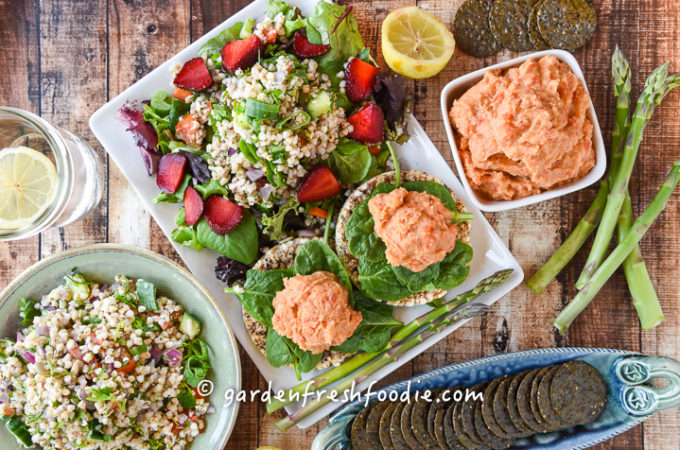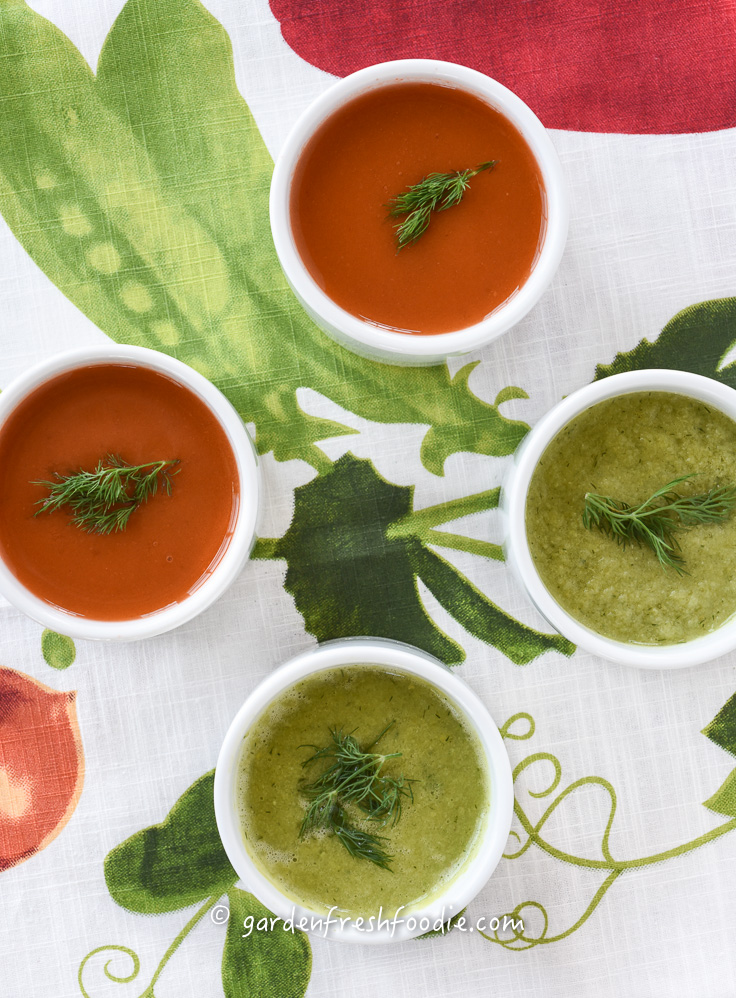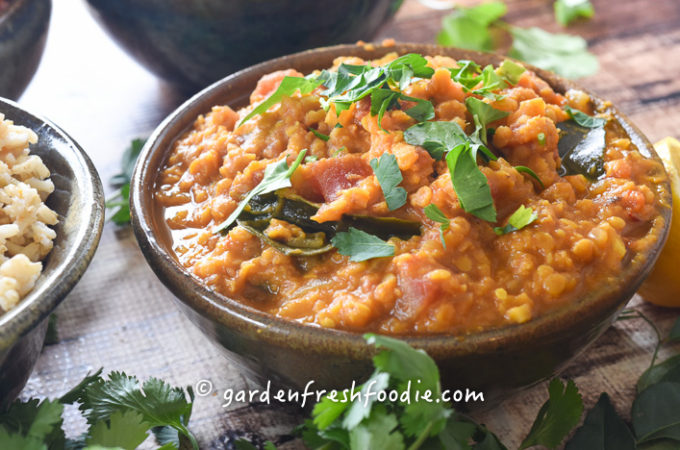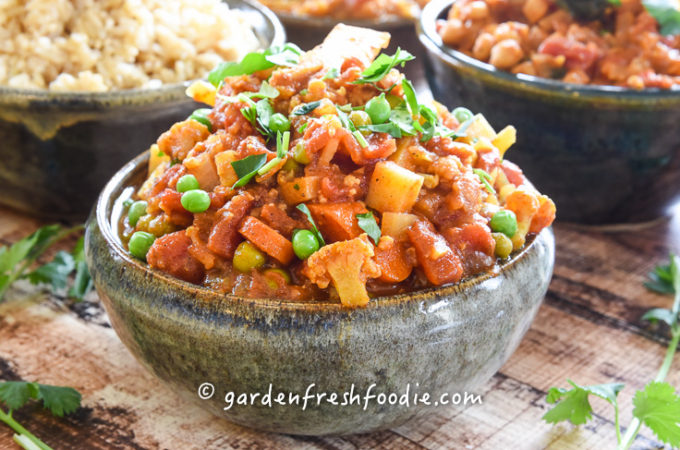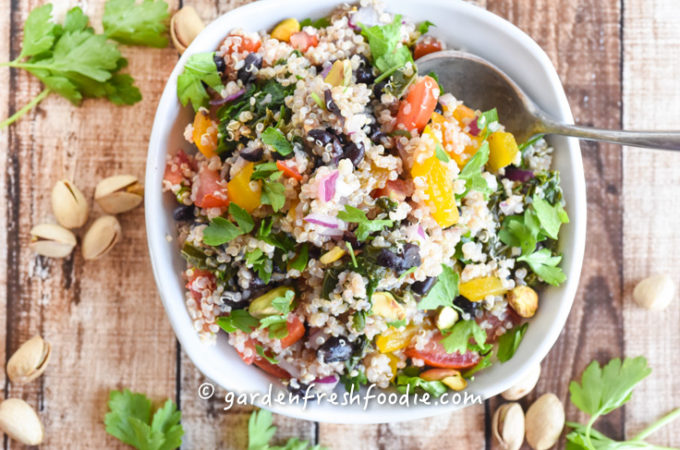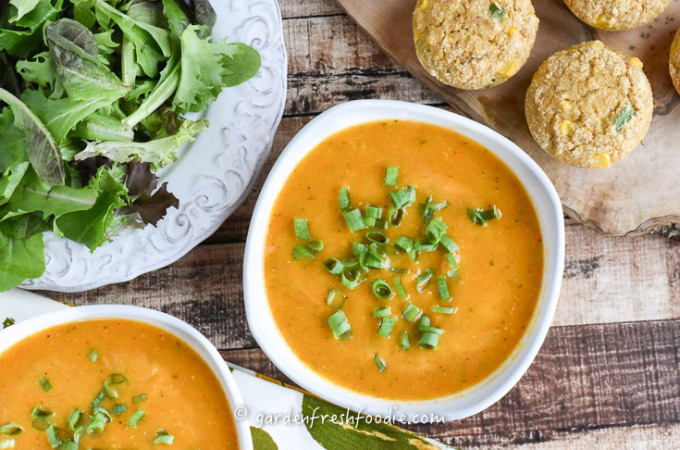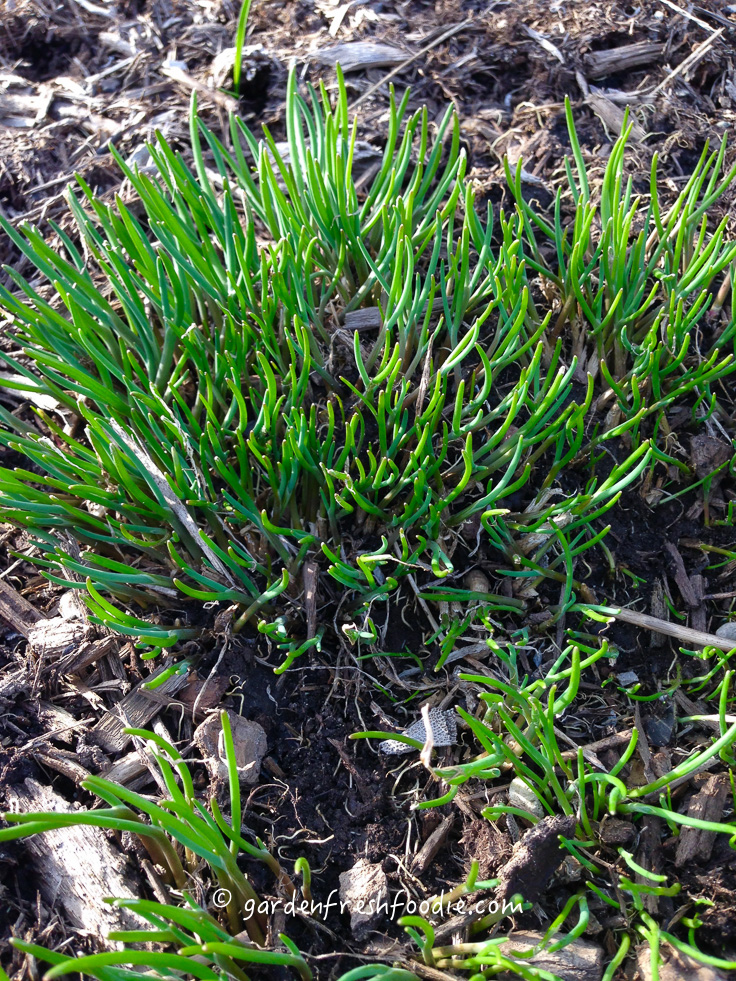 Chives-the first thing to pop up in my garden. Chives shout-“Yeah It’s Finally Spring!!!!!” and, in our part of the country, that shout couldn’t come soon enough! Chives are a perennial, meaning they come back every year, without the need for replanting. They are incredibly easy to grow, and can be planted in the garden or in a container. They need full sun to grow properly, and if they begin to get crowded, simply dig them up, divide, and replant. Give the extras to a friend, or grow them in a new area of the garden. I try to prevent them from going to flower for culinary reasons, as this produces a thicker, tougher stem that I don’t like. The flowers are a beautiful purple color, and are great as an edible garnish or added color to the spring garden. If you do allow them to go to flower, simply cut the flowering stems out of the clump once they’ve flowered to allow the non-flowering stems to grow. I also grow garlic chives (pictured below), which are very similar to traditional chives, but not as delicate. They have a thicker stem that can hold up to sautéing, and have a mild garlic flavor. They flower as well, producing a white bloom. Garlic chives spread much more than their traditional counterpart. To avoid its proliferation, don’t allow them to go to flower (clip off the bloom). You can plant chives and other perennial herbs now, even though it’s still cold here. Spring and fall are great times to plant perennials, and chives are no exception.
Chives-the first thing to pop up in my garden. Chives shout-“Yeah It’s Finally Spring!!!!!” and, in our part of the country, that shout couldn’t come soon enough! Chives are a perennial, meaning they come back every year, without the need for replanting. They are incredibly easy to grow, and can be planted in the garden or in a container. They need full sun to grow properly, and if they begin to get crowded, simply dig them up, divide, and replant. Give the extras to a friend, or grow them in a new area of the garden. I try to prevent them from going to flower for culinary reasons, as this produces a thicker, tougher stem that I don’t like. The flowers are a beautiful purple color, and are great as an edible garnish or added color to the spring garden. If you do allow them to go to flower, simply cut the flowering stems out of the clump once they’ve flowered to allow the non-flowering stems to grow. I also grow garlic chives (pictured below), which are very similar to traditional chives, but not as delicate. They have a thicker stem that can hold up to sautéing, and have a mild garlic flavor. They flower as well, producing a white bloom. Garlic chives spread much more than their traditional counterpart. To avoid its proliferation, don’t allow them to go to flower (clip off the bloom). You can plant chives and other perennial herbs now, even though it’s still cold here. Spring and fall are great times to plant perennials, and chives are no exception.
Chives are a member of the allium family, one comprised of onions, shallots, scallions, garlic, and leeks. Chives, and all allium family members, contain allicin, a compound that helps to decrease inflammation and has been shown to improve circulation, reduce blood pressure, and lower LDL cholesterol. Chives also contain many antioxidants that may help to reduce the risk of many forms of cancer, especially prostate cancer.
Members of the allium family have also been shown to have anti-microbial and fungal properties, making them a powerful support to the immune system. Chives contain smaller amount of nutrients than other allium members, but they do supply potassium, calcium, beta-carotene, folic acid and vitamin K. Chives also supply lesser amounts of magnesium, iron and trace amounts of several B vitamins. All of these nutrients help with reducing inflammation in the body.
Chives add a beautiful color and finish to any dish. I love to grow them, since they can add an easy burst of color and mild onion flavor to dishes. They help to not just garnish a dish, but enhance its flavor. You can add them to the tops of your dishes, but don’t leave them solely as a garnish. Use them in marinades, salad dressings, pastas, quinoa, or any dish where they can be added in cool.
An awesome way to add in some chives is to make my chive cashew cream cheese stuffed dates! 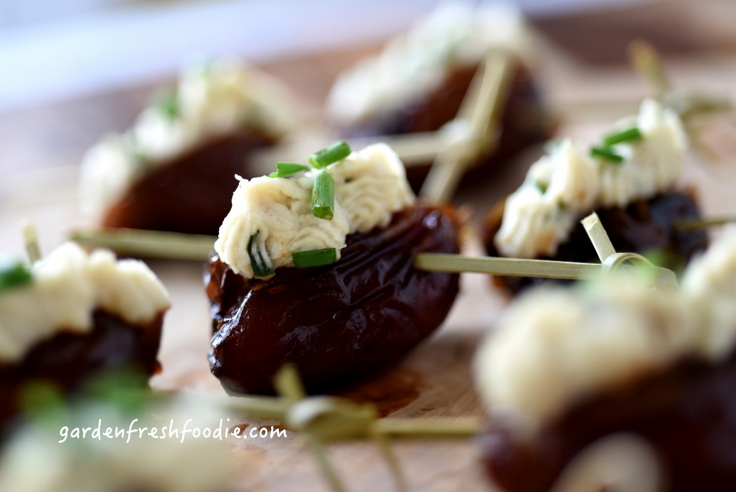
So live long and chive on…
